iPhone 16 Pro Max vs. Samsung Galaxy Z Fold 6: The Ultimate Flagship Showdown
Smartphones have evolved rapidly over the past decade, and 2024 marks a new pinnacle with Apple’s iPhone 16 Pro Max and Samsung’s Galaxy Z Fold 6. Both devices represent the best of their respective brands, pushing the boundaries of design, performance, and innovation. While Apple refines its tried-and-true formula, Samsung continues to experiment with foldable technology, offering users a glimpse into the future.
In this comprehensive comparison, we’ll explore every aspect of these two titans—from design and display to performance, camera systems, software, battery, and more—to help you decide which flagship best suits your needs.
1. Design and Build Quality
iPhone 16 Pro Max
Apple’s iPhone 16 Pro Max maintains the classic slab design, but with subtle refinements. The chassis is crafted from aerospace-grade titanium, making it both lighter and more durable than its predecessor. The front and back are protected by Ceramic Shield glass, and the device boasts IP68 water and dust resistance.
Apple has slightly reduced the bezel size, resulting in a more immersive edge-to-edge display. The flat edges and rounded corners provide a familiar yet premium feel, and the device is available in a range of sophisticated colors.

Samsung Galaxy Z Fold 6
Samsung’s Galaxy Z Fold 6 is a marvel of engineering, featuring a foldable design that transforms from a standard smartphone into a compact tablet. The hinge mechanism is more robust than ever, with improved dust and water resistance (IPX8 rating). The exterior is constructed from Armor Aluminum and Gorilla Glass Victus 2, ensuring durability.
When folded, the Z Fold 6 feels like a standard phone, albeit slightly thicker. Unfolded, it reveals a stunning 7.6-inch main display, perfect for multitasking and media consumption. The foldable design is still a conversation starter and a testament to Samsung’s innovation.
Verdict
iPhone 16 Pro Max: Classic, refined, and durable.
Galaxy Z Fold 6: Innovative, versatile, and futuristic.
The iPhone excels in traditional craftsmanship, while the Z Fold 6 leads in transformative design.
2. Display Technology
iPhone 16 Pro Max
The iPhone 16 Pro Max features a 6.9-inch Super Retina XDR OLED display with ProMotion technology, offering a 120Hz refresh rate for ultra-smooth scrolling and responsiveness. The display supports HDR10, Dolby Vision, and reaches peak brightness levels of up to 2,500 nits, making it easily viewable in direct sunlight.
Color accuracy and contrast are industry-leading, making the iPhone ideal for creative professionals and media enthusiasts.
Samsung Galaxy Z Fold 6
The Z Fold 6 boasts two displays:
Cover Display: 6.3-inch Dynamic AMOLED 2X, 120Hz, HDR10+.
Main Display: 7.6-inch Dynamic AMOLED 2X, 120Hz, HDR10+, with an under-display camera.
The main display is nearly crease-free compared to previous generations, offering a seamless tablet-like experience. The flexible AMOLED technology provides vibrant colors, deep blacks, and excellent viewing angles.
Verdict
iPhone 16 Pro Max: Best-in-class single display.
Galaxy Z Fold 6: Dual displays, with a unique foldable main screen.
For traditional use, the iPhone’s display is unmatched. For multitasking and immersive experiences, the Z Fold 6’s foldable screen is revolutionary.
3. Performance and Hardware

iPhone 16 Pro Max
Powered by Apple’s A18 Pro chip, built on a 3nm process, the iPhone 16 Pro Max is a performance powerhouse. It features a 6-core CPU, 6-core GPU, and a 16-core Neural Engine, delivering exceptional speed and efficiency. The device comes with 12GB RAM and storage options up to 2TB.
Apple’s hardware-software integration ensures smooth performance, whether gaming, editing 4K video, or running intensive apps.
Samsung Galaxy Z Fold 6
The Z Fold 6 is equipped with the Qualcomm Snapdragon 8 Gen 3 (or Exynos equivalent in some regions), paired with 12GB or 16GB RAM and up to 1TB storage. The chipset is optimized for AI tasks, multitasking, and gaming, with improved thermal management for sustained performance.
Samsung’s One UI adds features tailored for foldables, such as multi-window support and drag-and-drop functionality.
Verdict
iPhone 16 Pro Max: Unmatched single-core performance and efficiency.
Galaxy Z Fold 6: Multitasking prowess and robust hardware.
Both phones are among the fastest on the market, but the iPhone edges out in raw performance, while the Z Fold 6 excels in multitasking.
4. Camera Systems
iPhone 16 Pro Max
Apple has introduced significant upgrades to its camera system:
Main Camera: 48MP wide sensor with improved low-light performance.
Ultra-Wide: 12MP with macro capabilities.
Telephoto: 12MP with 5x optical zoom.
Front Camera: 12MP TrueDepth with Face ID.
The iPhone’s computational photography, Smart HDR 6, and ProRAW/ProRes support make it a favorite among content creators. Video capabilities include 8K recording, Cinematic Mode, and advanced stabilization.
Samsung Galaxy Z Fold 6
The Z Fold 6 features a versatile triple-camera setup:
Main Camera: 50MP wide sensor.
Ultra-Wide: 12MP.
Telephoto: 12MP with 3x optical zoom.
Front Cameras: 10MP (cover), 4MP (under-display).
Samsung’s camera software offers robust AI enhancements, Night Mode, and Director’s View for live multi-camera recording. The foldable form factor allows for unique photo and video angles.
Verdict
.jpg)
iPhone 16 Pro Max: Superior video and computational photography.
Galaxy Z Fold 6: Versatile, with unique foldable camera use cases.
Both devices are excellent for photography and videography, but the iPhone has an edge in video quality and consistency.
5. Software Experience
iPhone 16 Pro Max
Running iOS 18, the iPhone 16 Pro Max benefits from Apple’s streamlined and intuitive user interface. New features include enhanced widgets, improved multitasking, and deeper AI integration with Siri and on-device processing for privacy.
The App Store remains the gold standard for quality and security, and Apple’s ecosystem integration (with Macs, iPads, and Apple Watch) is seamless.
Samsung Galaxy Z Fold 6
The Z Fold 6 runs One UI 6.1 on top of Android 14, optimized for foldable devices. Features like App Continuity, Flex Mode, and Multi-Active Window make multitasking a breeze. Samsung DeX turns the phone into a desktop-like experience when connected to a monitor.
Android’s customization options and support for third-party apps are unmatched, and Samsung promises four years of major updates.
Verdict
iPhone 16 Pro Max: Polished, secure, and tightly integrated.
Galaxy Z Fold 6: Flexible, customizable, and tailored for productivity.
Choose iOS for simplicity and security, or One UI for flexibility and multitasking.
6. Battery Life and Charging
iPhone 16 Pro Max
Apple has increased battery capacity to 4,800mAh, with improved efficiency thanks to the 3nm A18 Pro chip. Real-world usage offers up to 2 days of moderate use. The device supports 35W wired charging, MagSafe wireless charging, and reverse wireless charging.
Samsung Galaxy Z Fold 6
The Z Fold 6 packs a 4,600mAh dual-cell battery. Foldables typically consume more power, but Samsung’s optimizations allow for a full day of heavy use. It supports 45W wired charging, 25W wireless charging, and reverse wireless charging.
Verdict
iPhone 16 Pro Max: Slightly longer battery life and faster wireless charging.
Galaxy Z Fold 6: Faster wired charging, but shorter battery life due to dual displays.
7. Ecosystem and Accessories
iPhone 16 Pro Max
Apple’s ecosystem is its greatest strength. Handoff, AirDrop, Universal Clipboard, and seamless device switching make life easier for those invested in Apple products. The iPhone 16 Pro Max works flawlessly with AirPods, Apple Watch, iPad, and Mac.
Samsung Galaxy Z Fold 6
Samsung’s ecosystem is robust, especially for users with Galaxy Buds, Galaxy Watch, or Samsung tablets. Samsung Flow, SmartThings, and DeX offer cross-device functionality, though not as tightly integrated as Apple’s.
Verdict
iPhone 16 Pro Max: Best for those already in the Apple ecosystem.
Galaxy Z Fold 6: Great for Samsung and Android users.
8. Price and Value
iPhone 16 Pro Max
The iPhone 16 Pro Max starts at $1,199 for the base model, with higher storage options increasing the price. Apple’s devices retain value well and receive long-term software support.
Samsung Galaxy Z Fold 6
The Z Fold 6 is priced from $1,799, reflecting its advanced foldable technology. While expensive, it offers both a phone and tablet experience in one device.
Verdict
iPhone 16 Pro Max: Expensive but offers strong value retention.
Galaxy Z Fold 6: Premium price for cutting-edge innovation.
9. Which Should You Choose?
Choosing between the iPhone 16 Pro Max and Samsung Galaxy Z Fold 6 depends on your priorities:
Choose iPhone 16 Pro Max if you value traditional design, best-in-class performance, superior video capabilities, and seamless integration with the Apple ecosystem.
Choose Samsung Galaxy Z Fold 6 if you crave innovation, multitasking, and the versatility of a foldable device that doubles as a tablet.
Both devices are technological masterpieces, representing the pinnacle of what’s possible in 2024. The iPhone 16 Pro Max is the ultimate refinement of the classic smartphone, while the Galaxy Z Fold 6 is a bold step into the future.



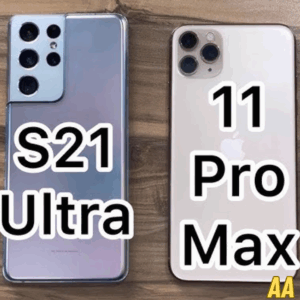
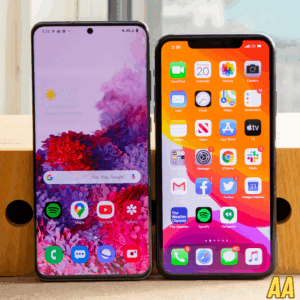
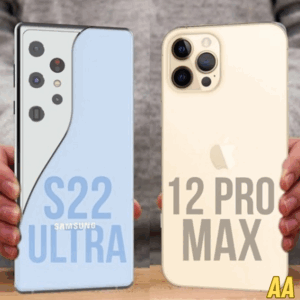

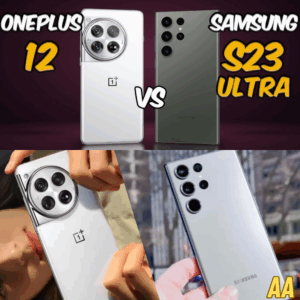
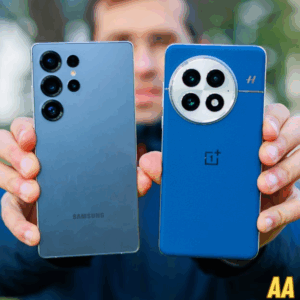
Trackbacks and Pingbacks